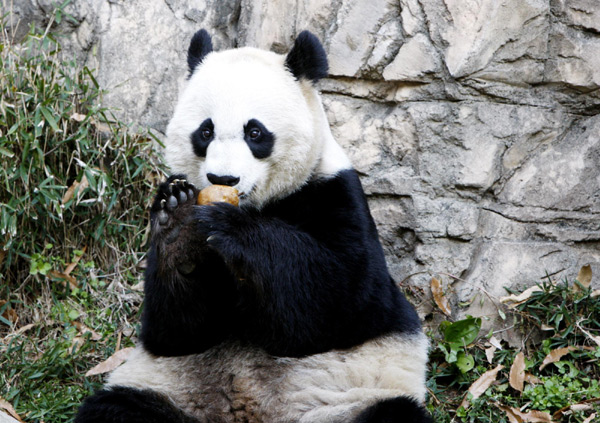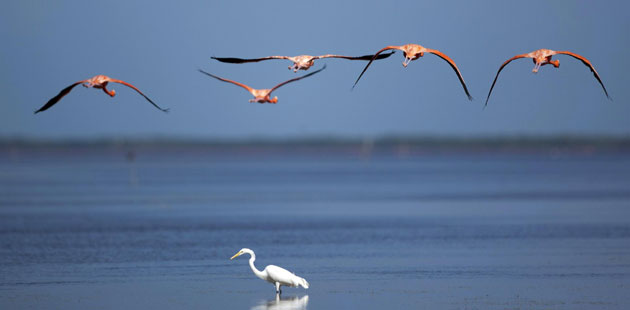US zoo gets $4.5m donation for panda program
Updated: 2011-12-20 07:38
(Xinhua)
|
|||||||||
WASHINGTON - The US Smithsonian's National Zoo on Monday announced that it received a 4.5-million-dollar donation to fund the giant panda program for the next five years, providing funds to conservation efforts in China, reproductive science, professional training programs, as well as giant panda care and upgrades to the zoo habitats.
The donation was from David Rubenstein, co-founder and managing director of private equity firm The Carlyle Group. "We are honored to be part of a cherished program that brings joy to millions of people and draws together two great nations working to preserve these magnificent and gentle giant pandas," Rubenstein said at a ceremony at the zoo, which was based in Washingtong, D.C..
|
 Giant panda Mei Xiang, on loan from China with Tian Tian, another giant panda, eats a fruit at the US Smithsonian's National Zoo in Washington on Dec 19, 2011. [Photo/Xinhua] |
Rubenstein told reporters that by giving the gift to researches on giant panda, a high-profile endangered species loved by millions around the globe, he hoped to draw more people to the idea of conserving pandas and other endangered animals, and encourage others to give as well.
Zhang Yesui, Chinese Ambassador to the United States, thanked Rubenstein for his gift for protection of the giant pandas, a national treasure of China, saying that China and the United States have worked closely to protect the endangered species, and the joint effort has proved to be successful.
The gift allows the National Zoo's animal care and the Smithsonian Conservation Biology Institute's scientific team to proceed with the five-year science plan established with their Chinese colleagues from the China Wildlife Conservation Association.
The scientists hope to examine the creation and impact of corridors to link fragmented habitats that will benefit giant pandas and other wildlife species, as well as to examine how to restore habitats, especially those where pandas appear to be making a comeback.
They are also eyeing to provide advice on giant panda reintroduction, examine potential impact of transmissible diseases on giant pandas and other wildlife species, and continue research on giant panda reproduction and management.
The National Zoo houses Mei Xiang and Tian Tian, a pair of giant pandas on loan from China. They produced a cub Tai Shan, via artificial insemination in 2005. Tai Shan now lives in China.
Established in 1889, the 163-acre zoo in the heart of Washington, D.C. now exhibits living animal and plant collections and conducts research in the broad discipline of conservation biology. It is home to about 2,000 animals representing nearly 400 species. Nearly a quarter of the animals at the zoo are endangered species, including giant pandas.











